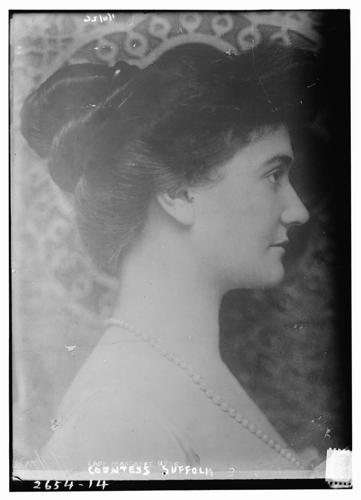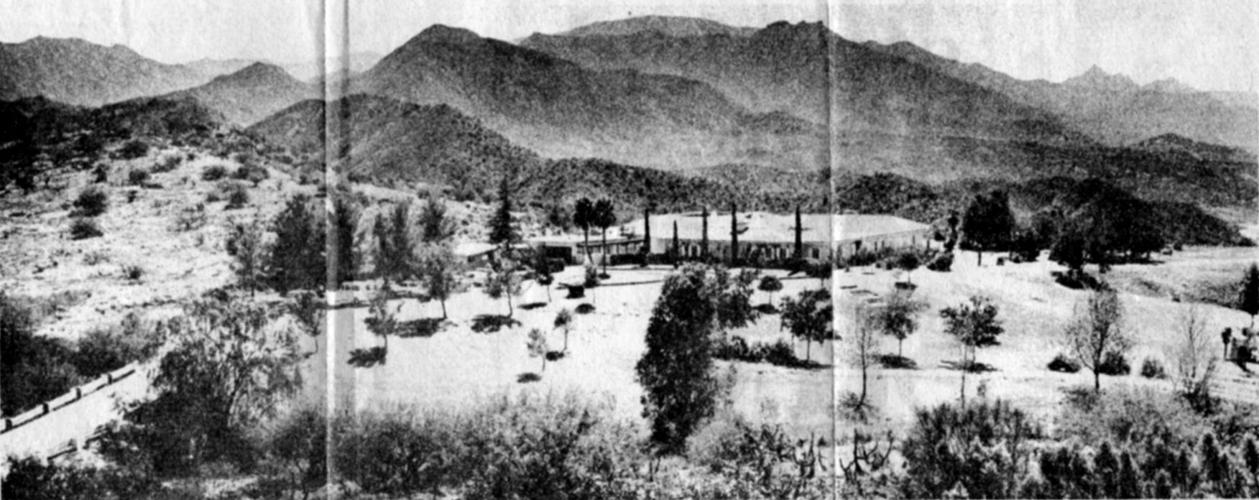Margaret Howard had the wealth to live anywhere in the world, and she traveled extensively during her lifetime. Yet she chose Tucson as her last stop, leaving an imprint that can still be seen today.
Marguerite “Margaret” Hyde (Daisy) Leiter was the youngest of four children born to Levi and Mary (Carver) Leiter in Chicago on Sept. 1, 1879. Levi amassed a considerable fortune in dry goods and real estate businesses along with a partnership with Marshall Field (of department store fame) that made him a multimillionaire.
Margaret and her two sisters became well-known in European social circles. While visiting her older sister, Mary, who had become the Baroness Curzon upon her marriage to Lord Curzon, Viceroy of India, Margaret met Henry Molyneux Paget Howard, 19th Earl of Suffolk, 12th Earl of Berkshire. When they married in 1904, Margaret acquired the title Countess of Suffolk.
Her wedding took place in Washington, D.C., with the New York Times swooning over her “gown of point de Venice over white satin and tulle veil, the latter held in place by a coronet of diamonds, a part of the family jewels of the house of Suffolk and Berkshire, which was sent from England for the event.”
Margaret and Henry had three sons (Charles, Cecil, and Greville) before Henry was killed during World War I. Their eldest son, Charles, was killed in 1941. Margaret never remarried.
Levi Leiter died shortly before Margaret’s marriage, and an extensive legal battle ensued over the vast family fortune, with Margaret on one side and her surviving brother and sister, Joseph and Nancy, on the other (sister Mary had died). The legal battle lasted eight years with Margaret outliving all of her siblings.
Levi supposedly stipulated in his will that his children must live a portion of each year in the United States. In the mid-1930s, Margaret began spending her time in the U.S. wintering in Tucson and found she enjoyed the sparseness of the land, the quiet of the desert, and the ability to live as she pleased.
She bought 640 acres on Magee Road just east of Oracle Road and engaged an architect to design a two-story concrete house with reinforced steel walls.
The first floor contained a 36-foot-long living room, master bedroom, dining room, kitchen (with a separate eating area for the servants), and a light therapy room. Three guest bedrooms and servants’ quarters were on the second floor.
Citrus groves and date trees surrounded the property. The air conditioning system in the home may have been the first in Tucson. Beneath the house, she added a bomb shelter.
For over 20 years, Margaret spent a good portion of each year in the Tucson home she called Forest Lodge.
When she was not at home, she might be on safari shooting animals with her camera. And although she earned her helicopter pilot’s license, she bought a small Cessna airplane and made sure her chauffeur (possibly a former RAF pilot) kept up his pilot’s license to take her wherever she cared to go.
As the Tucson community continued to grow, Margaret found the population encroaching on her Forest Lodge property. In 1956, she sold her house and land and spent a winter in Florida before deciding she preferred the desert to the ocean.
She purchased a 3,500-acre ranch near the town of Oracle and hired an architect, contractor and interior designer to build a 7,000-square-foot Spanish-style home she called Casa del Oro (House of Gold). She added a swimming pool along with citrus trees that were kept warm during the winter months with ultraviolet lights. The original ranch house was converted into servants’ quarters, while the small cattle operation on the property was discontinued.
She maintained the services of a maid, butler, cook, and secretary, and sometimes even housed a doctor on her property.
Margaret went on her last photography safari while the house was being built and returned to her completed home in November 1957.
Despite her reluctance to live near people, Margaret did have friends who frequently visited her. One colleague noted that Margaret “was an astute card player and especially good at poker and gin rummy.”
At age 88, Margaret told her pilot to ready her plane; she was off to see her son Cecil in California. While in flight, she suffered a heart attack and died before reaching her destination. Memorial services were held for her in Tucson at St. Philip’s in the Hills Episcopal Church.
Few Tucsonans knew Margaret while she lived among them, but many benefitted from the properties she left behind.
After her Forest Lodge property was sold to investors, some of the land was purchased by the Sisters of Immaculate Heart of Mary in 1962 to build a girls’ school. Her original house is now the Sisters’ convent.
The rest of the land was eventually turned into the housing development aptly named Suffolk Hills after the Countess.
In April 1969, the Casa del Oro property in Oracle went on the market with the sale ad boasting the house contained 6 bedrooms, 6½ baths, servants quarters, heated pool, caretaker’s house, and cowboys’ quarters.
It was snatched up by Motorola, Inc., which converted the massive house into Motorola Executive Institute, a luxury conference center. The company added additional buildings as well as lighted tennis courts and a theater but saw no need to include telephone service or televisions in its guest rooms.
Motorola gifted the land to the University of Arizona in 1980. Four years later, the university sold the land to an up-and-coming enterprise called Space Biosphere Ventures, which constructed a research facility to study life systems in a controlled environment.
Today, Margaret’s elaborate house stands adjacent to Biosphere 2, once again owned by the University of Arizona.
When was Tucson "born"? Who helped dedicate Davis-Monthan airfield? See how well you know this small bit of Tucson history.





